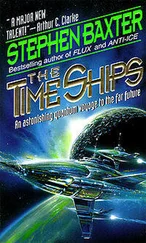I know our competitors are suffering, too. But we can’t go on like this, ladies and gentlemen; our costs are skyrocketing, our profits hemorrhaging.
I’m pleased to see the federal government is finally taking some positive action. Gray-suited spokesmen denouncing Carter and Eschatology as moonshine were all very well. What they are doing now — pumping out free twenty-four-hour sports, comedy, softsoaps, and synth-rock on TV — is a somewhat more practical
response.
We’ve already installed giant video walls in our workplaces in Tulsa and Palm Beach. Productivity took a hit, of course, but happily nowhere near as bad as in other sites without the wall-to-wall pap. We’ve also provided free e-therapy up to four hours a week per permanent employee. For now I agree with the government analysis that an anesthetized workforce is preferable to a workforce plunged into existential gloom.
But this is just a palliative. We have to find a long-term way to handle this. The end of the world may or may not be inevitable.
Our stockholder meeting is inevitable, however. I’m open to further suggestions.
“The Voice of Reason”
›Mail this on to ten people you know, and tell them to send it to ten people they known and so on. We have to inoculate the species against the contagion of madness that is plaguing humankindi or this damn Carter hypothesis is going to become a self-fulfilling prophecy. HOW TO DEBUNK CARTER
› 1) First of all, don’t dismiss it as nonsense. The hypothesis may be wrong-headed, but it’s not irrational and it’s not illogical. We aren’t dealing with the usual airhead crap here. It’s more potent than that.
› 2) Don’t insult your opponent. Start with the premise that people aren’t stupid, whether they know science and math or not. If you insult them you’ll be seen as arroganti and you’ll lose the argument.
› 3) The best attack on Carter is the notion that the cosmos is radically indeterministic. You can argue from quantum physics to justify thisi if you can keep your audience with youi or from’ free will if not. There is no way, even in principle, to say how many humans might exist in the future. So the Carter analogy between humankind and balls in an urn breaks down.
› 4) If your audience is sophisticated enoughn remind them that the whole argument is based on Bayesian statistics, which is a technique to refine probabilities of an event given a knowledge of prior probabilities. But in this case we have no prior probabilities to work with (we can only guess about the long-term future of humankind). So the Bayesian technique can’t be valid.
› 5) Reduce the argument to the trivial. It’s trivially obvious that people discussing Carter’s argument find themselves alive today, not hundreds of years in the future. But nothing nontrivial follows from a triviality. Since no humans of the future are yet alive, it isn’t in the least surprising that we aren’t among them
› 6) You could try a reductio ad absurdum. On any scale an exponential curve looks the same. You always seem to be at the beginning, minuscule compared to what is to come. So the catastrophe will always be just over the horizon. (Of course this argument falls down unless the exponential curve of the human population really does extend to infinity. Any finitude and something like Carter comes into play- But you don’t have to mention that unless challenged.)
› 7) Appeal to common sense. Look back in time. A human of, say, A.D. 1000 would likewise have been sitting on top of an exponential curve reaching back to the Paleolithic. Would she have been correct to deduce she was in the last generations? Of course not, as we can see with retrospect. (You may find Carter proponents countering this one by saying this is a false analogy, humanity today faces far graver extinction threats than in A.D. 1000 because of our technological advancement! the way we have filled up the Earth, etc.
And it took our modern-day sophistication to come up with the Carter argument in the first place. So we have formulated the Carter prophecy at precisely the moment it is most applicable to us. But then you can argue that they are appealing beyond the statistics.)
‹continuing list snipped›
› Rememberi though! None of the counterarguments are definitive. You may find yourself up against somebody with as much or more understanding of statistics than you. In that case, escalate the argument until you blind the general audience with science.
› The objective here isn’t to disprove Carter — that may be impossible. You can hole the argument but you can’t sink it, and anyhow the one true invalidation will be our continued survival in 201 years — but we must stop this ludicrous panic over Carter before it eats us all up like a brush fire.
Maura Della
Doom soon was all rather difficult to believe, a month after Cornelius had gone public, as Maura endured the usual Potomac hell: breakfasts with reporters, morning staff meetings, simultaneous committee meetings to juggle, back-to-back sessions with lobbyists and constituents, calls, briefings, speeches, receptions, constant implant-pager tingles to make quorum calls and votes on the run. And then there were the constituency issues she couldn’t neglect: “casework” — distributing small favors, funded by the federal pork barrel and otherwise — and targeted mail and fund-raising shots and chat-room surgeries and online referenda and appearances, in person, e-person, or simulated. It was all part of the constant campaign, a treadmill she knew she couldn’t fall off of if she expected to get elected again.
But this was just the general grind of federal government. It was as if illegal rocket launches in the desert, the dire warnings of doom, had never happened.
The federal government think tanks who had tried to flesh out the Carter catastrophe hypothesis had provided her with some gloomy reading.
On the one hand, nobody could definitively undermine the argument itself on philosophical or mathematical grounds. No tame expert would stand up and say he or she could demonstrate the damn thing was bullshit in simple enough terms for the president to deliver to the nation, the panicking world.
On the other hand the think tanks could come up with a lot of ways the world might end.
War, of course: nuclear, biological, chemical, A disaster from genetic engineering, malevolent or otherwise. The report recalled one near-miss in the early ‘OOs in Switzerland, concerning a birth-control vaccine. A genetically altered salmonella bacterium had been supposed to cause a temporary infection in the female gut that triggered antibodies against sperm. It had, of course, mutated and gotten out of control. A hundred thousand women had been rendered permanently infertile before the bug was stopped.
Environmental catastrophes: the continuing collapse of the atmosphere’s structure, the greenhouse effect.
Ecoterrorism: people waging war both for and against the environment. Witness the ground-to-air missile that had recently brought down the Znamya, the giant inflatable mirror that should have been launched into orbit to light up the night sky over Kiev. Witness similar attacks on the reef balls on the Atlantic ocean shelf, the giant concrete hemispheres intended to attract fast-growing algae and so soak up excess atmospheric carbon dioxide. Maura was grimly amused to see that Bootstrap had been maj or investors in both these proj ects.
But much worse was possible. The environment was essentially unstable, or at least only quasi-stable. If somebody found a way to tip that stability, it might only need a small nudge.
That was the man-made stuff. Then there were natural disasters. That hoary old favorite, the asteroid strike, was still a
Читать дальше
Конец ознакомительного отрывка
Купить книгу












